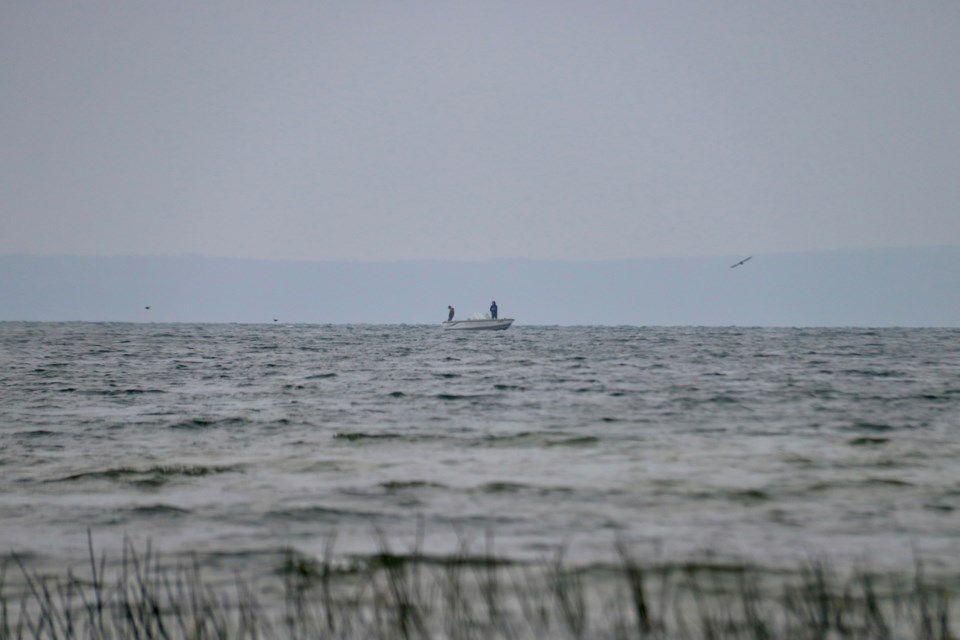LAKELAND - The Lakeland has been getting a bit of a break from the smoke and haze, but clear skies aren't expected to last.
Michael Bisaga, monitoring programs manager for the Lakeland Industry and Community Association (LICA), told Lakeland This Week weather conditions are looking favourable for forest fires.
“Unfortunately, rain seems to be very sporadic across the Prairies and in British Columbia... Just yesterday (July 21), British Columbia declared a state of emergency regarding the conditions being favourable for wildfires to start and spread very rapidly. I think we got a bit of a reprieve now from the smoke, but we suspect that we’re probably going to see more of that smoke drift into the air as the summer goes on. Unless we have some major rain events or things cool off,” he described.
In recent weeks, the Lakeland has seen poor air quality, reaching very high risk conditions on the Air Quality Health Index (AQHI) at its peak on July 17. According to Bisaga, it was caused by more than just the wildfires raging in BC.
“Depending on the wind direction of the day... it may have also been coming from Saskatchewan, because there are several hundred small fires burning in northern Saskatchewan,” Bisaga said. “At times, we’ve been seeing smoke from the fires burning in British Columbia, but other times what was influencing our area was smoke from northern Saskatchewan... We’re surrounded by wildfire activity right now, just depending on the direction the prevailing wind is coming from, we may be seeing smoke from either one of those two places."
At one point, LICA was reporting a level of 26 in the Cold Lake region, which Bisaga said, is off the AQHI scale completely.
“The AQHI goes from a scale from one to 10 and then 11-plus. When you do the actual calculation, it can produce a value above 11, but what we say is anything 11 or higher is very high risk in terms of the health risks,” he explained, adding levels LICA's monitoring area reached are rarely seen.
“It’s something we don’t see very often, in fact, we only really ever see values that high in the AQHI during wildfire or smoke season, when there’s a major event, either locally or when smoke is being carried into the region from fires some distance away."
LICA's air quality monitoring
LICA monitors air quality across the Lakeland, with permanent monitoring stations in Cold Lake, Marie Lake, and in the County of St. Paul near St. Lina.
The organization has a fourth station, which is portable.
“It’s very costly to set-up permanent monitoring. One of the things we can do is have this portable monitoring station and move it around to different communities every couple of years so we can get measurements all over the place,” noted Bisaga, adding they have decided to pull the portable station out of its current location in the Town of Bonnyville and relocate it to Lac La Biche due to public interest.
“It’s our first-time monitoring in that area. We don’t have much monitoring out that way,” he noted. “It is a bit of a spatial gap in terms of where we do our monitoring, and there was interest from the community on getting some measurements out that way, so that’s what informed our decision to monitor in Lac La Biche for a couple of years with our portable system."
In most cases, LICA installs monitoring stations in highly populated areas or places where there is a lot of industry.
For example, their station near Marie Lake.
"It’s our Tamarack Monitoring Station. That one, there’s several thousand people working in that area - it’s the oil sands production area, so there’s an element of both compliance because we’re monitoring the emissions from those facilities, but also there's lots of people working there,” outlined Bisaga.
He continued, “The St. Lina Monitoring Station is placed there to give us an idea of what background air quality is like for the region, so it’s there to monitor air as it moves into the region.”
The Cold Lake station gives LICA an idea of what air quality looks like in the "most populated centre in the region,” Bisaga said.
Why is the AQHI important?
“The AQHI is a tool to help you understand what the air quality around you means. You don’t actually have to understand 10-micrograms of particulate matter or 25 parts per billion of nitrogen DiOC, you don’t have to understand what that means. It’s a very simple metric like the UV index,” Bisaga detailed. “It’s a simple communication tool to help you understand what the air quality means to your health."
The scale starts at one, which is considered low risk, and works its way up to 10-plus, or very high risk.
“With each one of the categories of risk - low risk, moderate risk, high risk, and very high risk – there are messages that go along with that and there are separate health messages that go for the general healthy population and then the at-risk population, so people who might have asthma or cardiovascular issues,” outlined Bisaga.
He added, “The AQHI is really designed to help people inform their personal choices."
There are ways to monitor your region's AQHI. The Province of Alberta has a website and an app, which will notify users when the air quality is considered poor in their area and provide tips on how to stay healthy during times of poor air quality.



